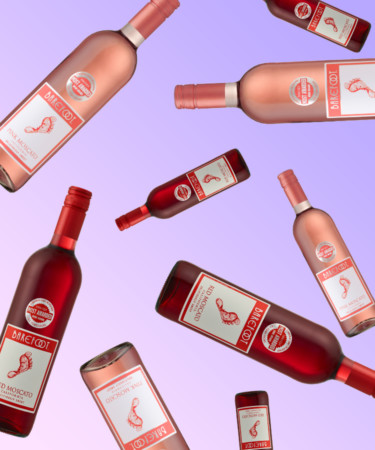Barefoot Wines has been a mainstay on grocery store shelves for decades. It produces a plethora of varietals, most of which come from California, with flavor profiles for nearly every wine lover. Though the brand often gets compared to other big grocery store brands, its origin story holds a few unique qualities that set it apart from its competition.
Learn more about the best-selling brand with these eight things every wine lover should know about Barefoot.
Barefoot Walked Before It Ran
The brand’s creator, Davis Bynum, began making “Barefoot Bynum Burgundy” wine out of his garage in 1965. He continued for two decades while building a dedicated following, and eventually sold the company to Bonnie Harvey and Michael Houlihan in 1986. As entrepreneurs, Harvey and Houlihan saw the value in creating a whimsical and inviting brand identity. They relaunched with the name “Barefoot Cellars,” and branded it with the now-recognizable footprint label.
Its Name Is a Nod to the Obvious
Some may find the image of a barefoot somewhat out of place when shopping for a bottle of wine. However, the reasoning behind it is simple: It’s an homage to the free-spirited method of crushing grapes barefoot.
Barefoot Grew Through Supporting Nonprofits
In its first years, lack of capital and little to no marketing budget forced Harvey and Houlihan to be creative. In an interview with Forbes, Houlihan explains how the duo used a marketing technique they dubbed “Worthy Cause Marketing” to grow from the ground up. By donating both wine and time to small, local non-profits, they could establish and retain brand trust. That trust grew from local to regional and eventually national organizations. Currently, Barefoot Wines is partnering with the New Voices Foundation for its #WeStanForHer campaign. It has invested over $150,000 in grants to Black women-owned businesses to support, recognize, and uplift emerging entrepreneurs.
It’s Devoted to Cork
Well, not entirely. Barefoot’s Sangria and Moscato wines, plus a few white wines, are sealed with screw caps. However, for reasons unknown, Barefoot still uses cork for its red varietal wines and Chardonnay. It’s a surprising move, considering most brands that strive for a lower price point use Stelvin closures over cork.
It’s Popular Around the Globe
According to a 2021 report from Brand Finance, Barefoot Wines is one of the 10 most valuable wine brands in the world. It’s the second most valuable brand in the United States with a valuation of $509 million (Chandon is the most valuable at $827 million). Additionally, it beat out Lindemann’s from Australia to take spot No. 6, up from seventh the year prior.
Playing Hard Ball With Hard Seltzer
It’s no surprise that a dominating brand such as Barefoot decided to try its hand at the incredibly popular hard seltzer category. It came out swinging with the launch of four flavors — each containing only 70 calories and made from a wine base — in February 2020. Its Cherry & Cranberry flavor landed on VinePair’s list of The 30 Best Hard Seltzers of 2021.
You Can Buy Barefoot for Less Than a Cup of Coffee
It’s widely known that Barefoot is one of the more affordable wines on the market. But did you know that many of its offerings cost less than a latte? According to its website, each 250-milliliter Spritzer and Hard Seltzer sells for less than $2. On the other end, its most expensive products — the 3-liter on-tap boxes — don’t exceed $20.
Barefoot Is a Big Fish in an Even Bigger Pond
E&J Gallo purchased Barefoot Wines in 2005. Its wine siblings include labels such as Lamarca Prosecco, J Vineyards and Winery, Whitehaven, and, of course, Gallo Family Vineyards.
